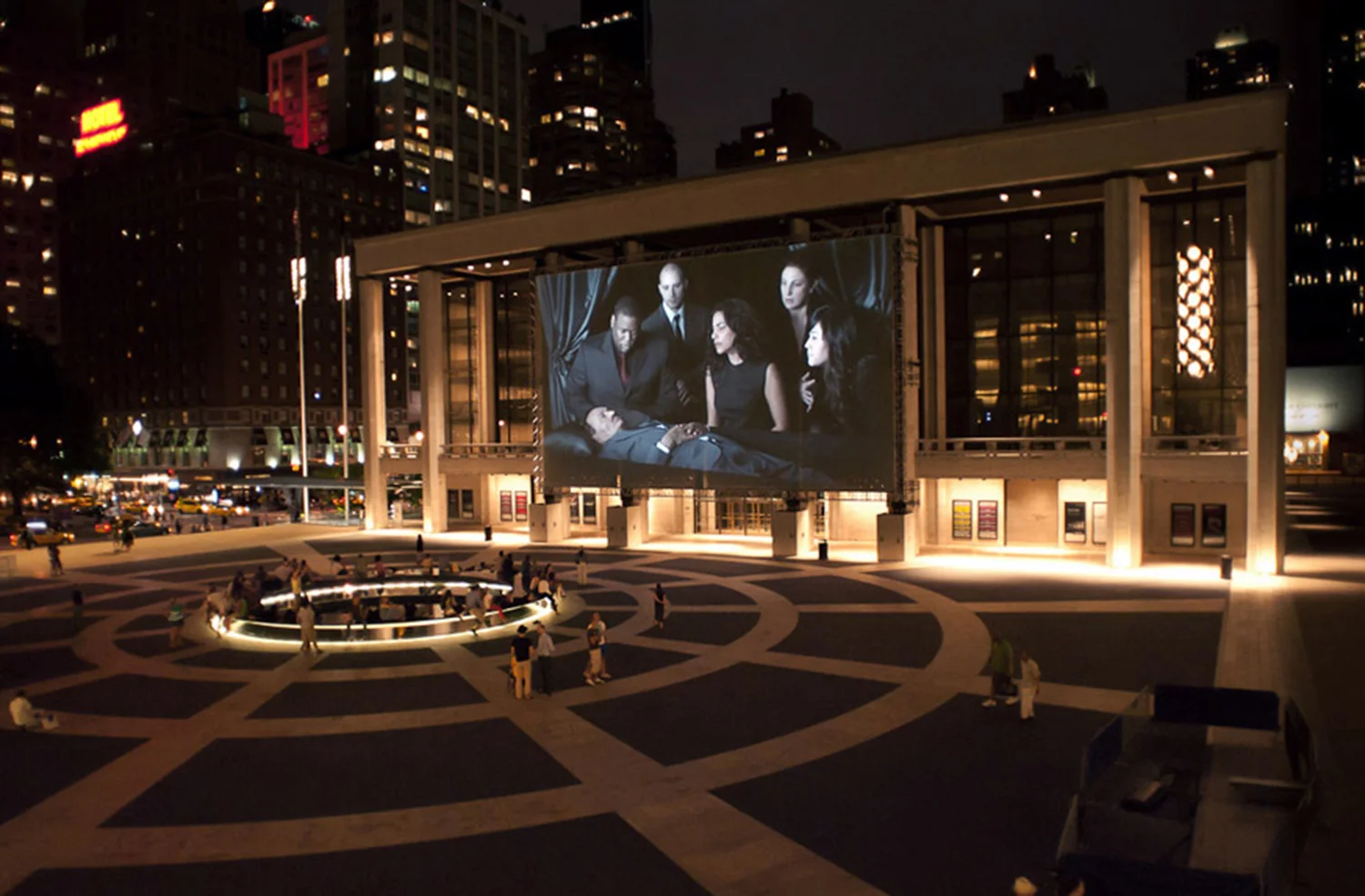PORTRAITS IN DRAMATIC TIME AT THE LINCOLN CENTER JOSIE ROBERTSON PLAZA, LINCOLN CENTER
NEW YORK, NY
The work was presented as part of the 2011 Lincoln Center Festival, utilizing the façade of the David H. Koch Theater as a media canvas, transforming the plaza into an outdoor museum and the building into a work of video art.
The bright images enlivened the nighttime architecture with its ever changing, emotionally charged tableaus of enormous intimacy and visual detail, peering into highly personal scenes projected on a vast screen in a public plaza. Using ultra-high speed, high definition cameras, the videos are presented in extreme-slow-motion video on to a screen mounted to the façade of the David H. Koch Theater in Lincoln Center Plaza.
David Michaelk, the artist, recorded several well-known theater and film performers in a scene. Then he slows the frames to display each emotion in larger-than-life detail as it is projected onto a screen that’s 85 feet wide and 45 feet high. “Portraits” represents Broadway, avant garde theater and Chinese opera, as well as several other theatrical genres, enhanced with costumes, production design, makeup and lighting.
The specially welded screen material was lashed to a frame which was mounted to the tall, skinny columns that frame the theater’s colonnade. The screen acts like a sail as it catches the wind, applying significant horizontal forces on to the columns for which they were not designed. The structural engineer evaluated the loads and determined the maximum wind velocity for the screen and the maximum force conditions for the columns.
A written operational plan was developed describing the wind circumstances that would require demounting of the screen. The plan for striking the screen during an excess wind event was rehearsed. An anemometer was mounted on top of the building and wind speed reports and forecasts were directed to the Festival production manager for monitoring and determining when the screen required demounting. (There was no excess wind event during the weeks when the screen was in place).
Working with McLaren Engineering, we designed a method of securing the screen to the building without penetrating or damaging the delicate travertine column enclosures. The design team’s work included the design of the frame and mounting, design evaluation for the protection of the building structure and finish, and obtaining regulatory approvals for the transient art installation.
Completed: 2011
David H. Koch Theater with video screen
Close-up of video screen

